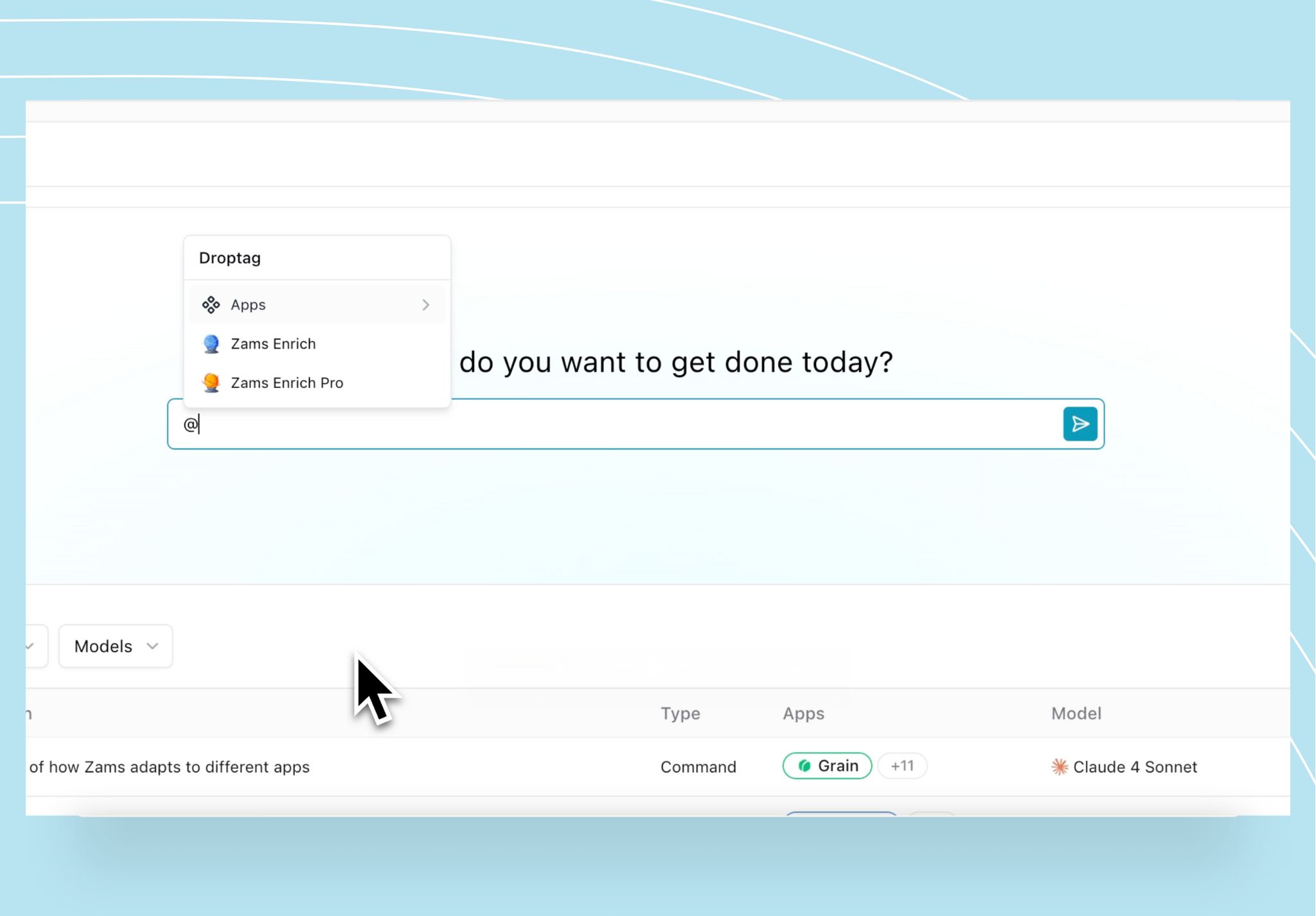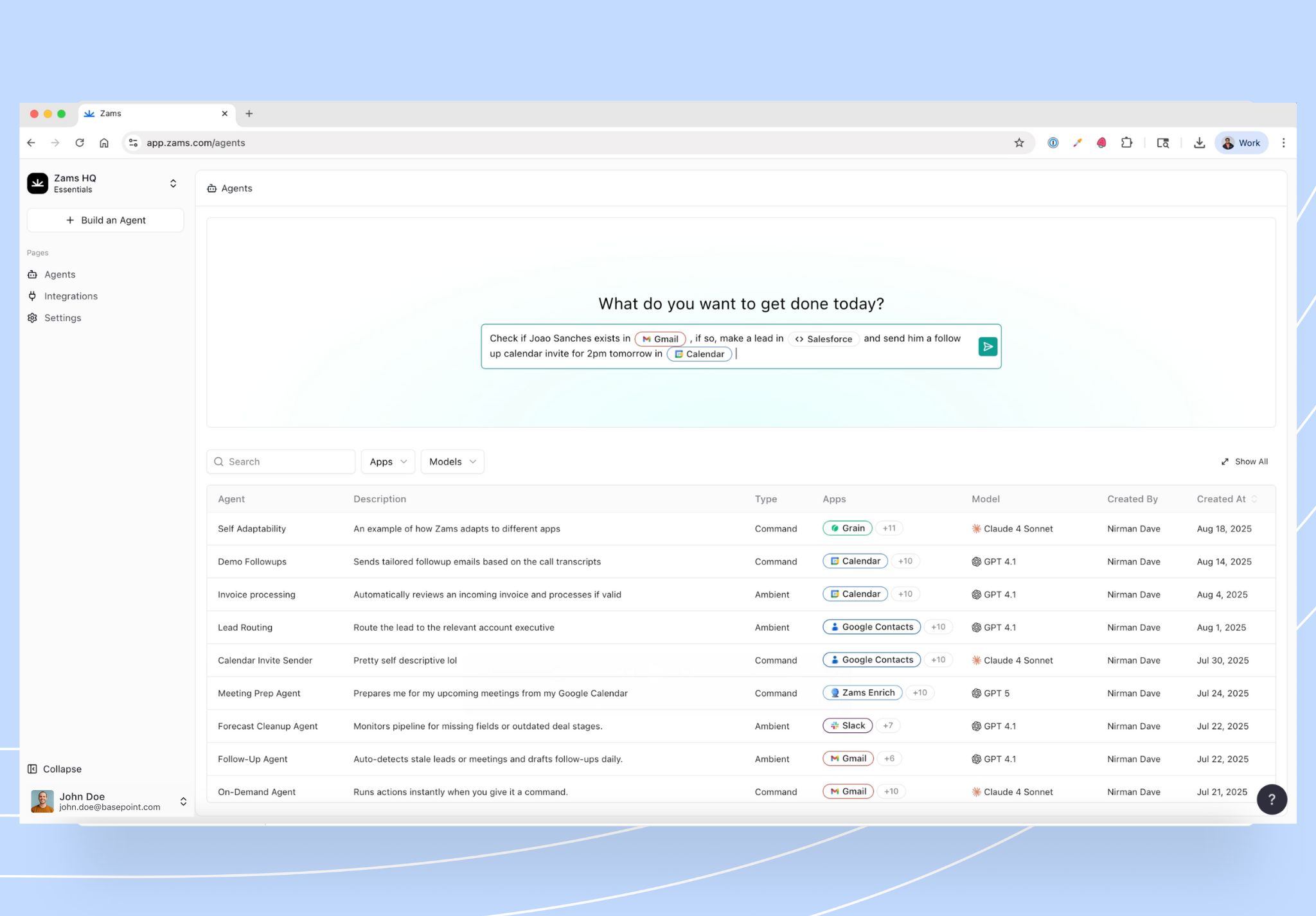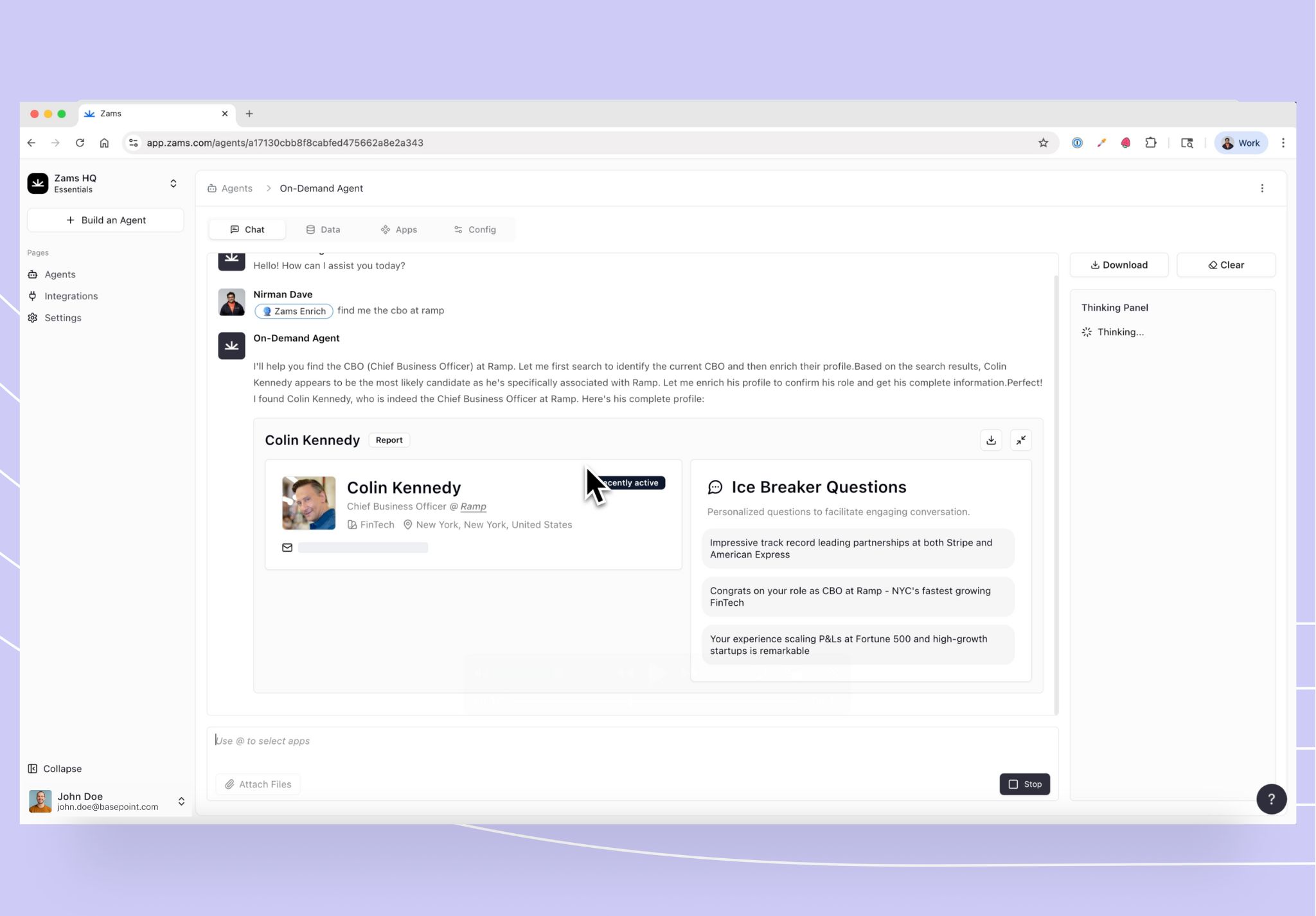Why “Persistence” Is Failing Modern Sales Teams
The limits of manual follow-ups in long B2B cycles
Traditional sales techniques built on persistence often collapse in lengthy B2B cycles. Manual follow-ups consume time, introduce human error, overwhelm sales team members, and cause reps to miss high-value moments of engagement. Automated nudges deliver timely, consistent outreach that outperforms outdated persistence models.
Why outdated salesman strategies slow revenue velocity
Old-school salesman strategies rely on repetition rather than relevance. Reps end up chasing instead of closing, creating friction and draining revenue velocity. Modern sales teams need automated systems that surface the right signal at the right time, and sales managers can leverage these systems to set better sales goals, monitor team performance, and ultimately improve sales outcomes.
The hidden cost of chasing instead of converting
Chasing unqualified leads eats into pipeline health and inflates costs of acquisition. Without automation, sales teams overinvest energy in prospects unlikely to convert. Intelligent nudges ensure every touchpoint is directed at leads most likely to close. By automating lead qualification, businesses achieve significant cost savings by reducing wasted effort and resources on unqualified leads.
Stop Chasing, Start Closing
Automated nudges keep your pipeline moving while outdated persistence stalls deals. With Zams, every follow-up lands at the perfect time.

Rethinking the Strategy of Selling with Customer Data in a Data-Driven Era
From intuition to precision: where sale strategies must evolve
The strategy of selling can no longer rely on gut feel. Data-driven automation equips teams with predictive insights, enabling precise targeting and improved close rates. Automated nudges, which are now recognized as part of the most effective sales strategies for modern teams, transform vague persistence into measurable performance.
How modern salesperson strategies balance efficiency and impact
Salesperson strategies today must blend efficiency with personalisation. Automation eliminates repetitive tasks while enabling reps to focus on high-value sales conversations that drive value. The result: stronger engagement and shorter sales cycles.
Sales techniques that scale only when powered by automation
Even the best sales techniques fail to scale when done manually. Automation ensures that every touchpoint, from lead nurturing to deal closure, is timely, consistent, and relevant. Scalable workflows give B2B sales teams the edge in competitive markets by helping to establish a repeatable sales process.
The Power of Automated Nudges in Deal Acceleration
Why well-timed nudges outperform relentless persistence
In B2B sales, timing beats volume. Automated nudges arrive exactly when prospects are most receptive, replacing endless persistence with precision. This approach keeps deals and the sales pipeline moving without exhausting reps or frustrating buyers.
Trigger-based follow-ups that land when buyers are most receptive
Automation tools use buyer signals like email opens, demo requests, or pricing page visits to trigger instant follow-ups. These real-time nudges deliver targeted sales messaging to transform passive interest into active engagement. Trigger-based sales techniques accelerate the buyer’s journey naturally.
How CRM automation keeps opportunities alive without rep burnout
CRMs equipped with customer relationship management and automation ensure no deal slips through the cracks. By scheduling follow-ups, reminders, and updates, automation preserves pipeline momentum while protecting reps from burnout. This balance allows sales teams to focus energy on high-value interactions.

Integrating Challenger Selling with Automation
Challenger selling is a powerful sales methodology that empowers sales teams to teach, tailor, and take control of the sales conversation. By challenging a prospective customer’s assumptions and introducing new perspectives, sales reps can differentiate their product or service and create real value. However, executing challenger selling at scale can be resource-intensive, especially when it comes to researching each target customer and crafting personalized messaging. This is where automation transforms the game, enabling sales teams to deliver insight-driven, high-impact sales strategies efficiently and consistently.
How challenger selling disrupts the status quo
Challenger selling stands out by pushing customers to rethink their current approach and consider innovative solutions. Instead of simply responding to customer needs, sales teams using this methodology proactively introduce new ideas and challenge the status quo. This consultative selling approach is especially effective in industries where change is constant and competition is fierce. By leveraging challenger selling, sales teams can position themselves as trusted advisors, not just vendors. Automation amplifies this effect by equipping sales reps with timely, relevant insights about each target customer, making every sales conversation more impactful and tailored to the customer’s unique business challenges.
Leveraging automated nudges to support challenger conversations
Automated nudges are a critical tool for supporting challenger selling. With automation, sales teams can trigger personalized follow-ups based on customer behavior such as engaging with specific content, attending webinars, or showing interest in a particular solution. These automated touchpoints can deliver thought-provoking insights, case studies, or industry trends that reinforce the challenger message and keep the conversation moving forward. By integrating automation into the sales process, sales teams ensure that every interaction is relevant and timely, freeing up sales reps to focus on high-value consultative selling rather than repetitive sales tasks. This approach not only increases the effectiveness of challenger selling but also helps sales teams maintain momentum throughout the sales cycle.
Driving buyer engagement with insight-driven automation
Insight-driven automation is at the heart of a successful sales strategy that combines challenger selling with modern sales tools. By harnessing customer data, sales teams can identify target customers, track their engagement, and deliver personalized recommendations that challenge their thinking and add value. Automation enables sales leaders to monitor key performance indicators such as sales cycle length, conversion rates, and customer acquisition cost, allowing for continuous improvement of the sales strategy plan. With automated workflows handling repetitive sales tasks, sales reps can dedicate more time to building relationships and closing deals with qualified leads.
A comprehensive sales strategy plan that integrates challenger selling and automation empowers sales teams to increase sales, shorten sales cycles, and achieve ambitious revenue targets. By providing the right insights at the right time, automation helps sales teams engage their target audience, build trust, and move more deals through the sales funnel. For sales leaders, this means a more predictable, scalable, and effective sales process one that delivers a competitive advantage in today’s dynamic market.
In summary, integrating challenger selling with automation is a winning sales strategy for modern sales teams. It enables sales professionals to deliver differentiated value, engage prospective customers with relevant insights, and close more deals all while optimizing sales performance and reducing the burden of repetitive tasks. By adopting this approach, sales teams can stay ahead of industry trends, exceed revenue targets, and deliver a superior customer experience.

Turning Sales Techniques Into a Repeatable Sales Process Playbook
Building automated workflows around proven inbound sales strategies
When automated workflows are built on top of a strong sales strategy plan and winning sale strategies, they transform into scalable playbooks. Each workflow ensures consistent application of best practices across the team, driving repeatable revenue outcomes.
Aligning sales reps and managers with consistent nudges
Consistency in messaging and cadence is often lost in manual selling. Automated nudges create alignment across reps and managers, ensuring every lead is treated with the same high-standard approach. This uniformity strengthens trust, boosts win rates, and also supports alignment between sales and marketing teams.
Closing the execution gap with system-driven salesperson strategies
Salesperson strategies often fail not in design but in execution. Automated systems close that gap, enforcing processes and removing reliance on memory or manual effort. By doing so, they turn good strategies into predictable performance drivers, supporting the entire sales process from lead generation to closing.
Proof That Automation Outpaces Persistence
Case study: nudges vs. manual persistence in stalled deals
In real-world comparisons, automated nudges consistently outperform manual persistence. Where human reps often miss the right timing or lose track of follow-ups, automation delivers perfectly timed reminders that revive stalled deals and push them forward in the pipeline, increasing the likelihood of reaching a closed deal.
How sales automation delivers ROI beyond human bandwidth
Manual persistence caps results at the limits of rep capacity, while sales automation scales infinitely. By automating follow-ups, reminders, and personalised outreach, businesses achieve more touches per prospect, higher engagement rates, and stronger ROI without increasing headcount, while also reducing the average sales cycle length.
Predictable growth through repeatable, scalable sales techniques
Automation transforms sales techniques into predictable growth engines. Instead of relying on persistence as an art, repeatable workflows create consistent deal progression. This shift ensures every opportunity is maximised, maximizing sales efforts and growth across teams and markets.
Final Thoughts
A solid sales strategy is essential for modern sales teams, who can’t rely on persistence alone automation is the real differentiator. With well-timed nudges, data-driven workflows, and scalable sales techniques, reps move beyond chasing prospects and start converting them into predictable revenue.
Equip Your Sales Techniques with Zams
Zams transforms outdated persistence into precision. By automating follow-ups, aligning sales strategies, and keeping deals alive, Zams gives B2B teams the power to accelerate cycles and close with confidence.
FAQ
Why is persistence no longer an effective sales technique in B2B?
Traditional persistence relies on repetitive manual follow-ups, which are often associated with outbound selling techniques such as cold calls and outreach emails. While these outbound selling methods can be effective, they often annoy prospects and waste rep time. In long B2B cycles, this approach slows revenue velocity and increases the risk of lost opportunities.
How do automated nudges improve sales techniques?
Automated nudges deliver well-timed, context-driven reminders based on buyer behavior. These nudges can be coordinated with marketing efforts for greater impact, ensuring that follow-ups are relevant, consistent, and more likely to re-engage prospects without overwhelming them.
What is the role of CRM automation in modern sale strategies?
CRM automation streamlines lead tracking, triggers follow-ups at the right moments, and ensures no deal slips through the cracks. It also helps collect and act on customer feedback, enabling teams to refine sales strategies based on real insights. This allows sales reps to focus on high-value conversations instead of admin-heavy persistence.
Can automation fully replace traditional salesperson strategies?
No. Automation enhances not replaces salesperson strategies. While it handles repetitive tasks and ensures consistency, the sales rep remains essential for building relationships and closing complex deals.
What ROI can teams expect from automated sales nudges?
Teams adopting automated nudges often see faster deal cycles, higher win rates, and improved productivity. Automation creates repeatable, scalable sales techniques that convert more consistently than manual persistence. Additionally, automation can help nurture existing customers, driving repeat business and upselling opportunities.



